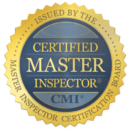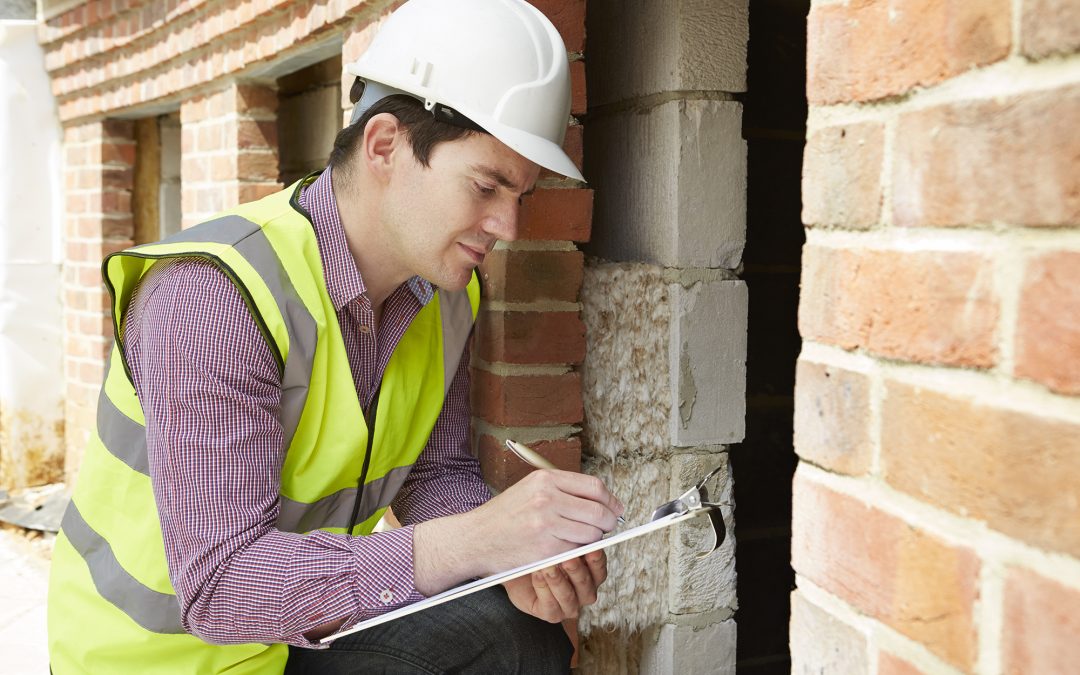Question:
As a real estate agent, how can I limit my liability with regards to home inspections?
Answer:
- Register for InterNACHI’s free, negligent referral protection plan for real estate agents.
- Insist that your client hire a professional home inspector to inspect the property, and strongly recommend that the inspection also include ancillary inspections for the presence of wood-destroying insects, as well as harmful pathogens, such as mold and radon.
- Have the home inspected before the sale so that it is “MoveInCertified.” MoveInCertified homes have been pre-inspected by InterNACHI-certified inspectors, and the sellers confirm that there are no major systems in need of immediate repair or replacement, and no known safety hazards.
- Take the time to manage your clients’ expectations of what can reasonably be discovered by a visual inspection of a property that is full of furniture, carpets, and stored items that further physically restrict the scope of an already limited inspection.
- Be sure to carry your own Professional Liability Insurance to protect yourself from allegations that you should have independently verified that the property was defect-free.
- Review the inspector’s Pre-Inspection Agreement to make sure that it contains a Notice Clause that requires the buyers to notify the inspector within no more than 14 days of the discovery of any defect for which they believe he is responsible.
- Avoid conflicts of interest. Never recommend an inspector who participates in preferred vendor schemes. All major inspector associations prohibit participation in such undue praise-purchasing schemes. You have a fiduciary duty to recommend the very best inspectors based solely on merit, not money. And it goes without saying that you should never recommend any inspector with whom you have a close personal or blood relationship.
- Recommend the high-value inspector, not the low-price inspector. Good inspectors charge accordingly. Trying to save your client $100 on a home inspection could wind up costing them $10,000 in-home repairs.
- Only recommend inspectors who adhere to a strict Code of Ethics and Standards of Practice, such as members of InterNACHI.
- Only recommend inspectors who participate in InterNACHI’s We’ll Buy Your Home Back Guarantee.
- Always attend the home inspection. Many real estate agents have been advised never to attend a home inspection, allegedly by real estate attorneys. Agents who say that they have received such advice are never able to articulate its rationale. You are no less likely to be named in a lawsuit by hiding during the inspection, and the reasons for attending the inspection are quite compelling. First, your presence is a clear indication of your professionalism and concern for your client’s interests, two factors well-known to engender referrals. Secondly, it affords a very cogent opportunity to refocus your client’s attention to the limited nature of the inspection. For example, you could note the numerous obstacles, such as furniture, carpets, and appliances, that can obviously inhibit the inspector’s ability to see certain areas of the home. Finally, should this transaction come to grief, your interests are usually perfectly aligned with the inspector’s, and your recollection of such limiting factors would provide powerful corroboration of the exonerating reasons that a defect was not discovered during the inspection.
Mold, Moisture and Your Home

- The key to mold control is moisture control.
- If mold is a problem in your home, you should clean up the mold promptly and fix the water problem.
- It is important to dry water-damaged areas and items within 24 to 48 hours to prevent mold growth.
Why is mold growing in my home?
Molds are usually not a problem indoors, unless mold spores land on a wet or damp spot and begin growing. Molds have the potential to cause health problems. Molds produce allergens (substances that can cause allergic reactions), irritants, and in some cases, potentially toxic substances (mycotoxins). Inhaling or touching mold or mold spores may cause allergic reactions in sensitive individuals. Allergic responses include hay fever-type symptoms, such as sneezing, runny nose, red eyes, and skin rash (dermatitis). Allergic reactions to mold are common. They can be immediate or delayed. Molds can also cause asthma attacks in people with asthma who are allergic to mold. In addition, mold exposure can irritate the eyes, skin, nose, throat, and lungs of both mold-allergic and non-allergic people. Symptoms other than the allergic and irritant types are not commonly reported as a result of inhaling mold. Research on mold and health effects is ongoing. This article provides a brief overview; it does not describe all potential health effects related to mold exposure. For more detailed information, consult a health professional. You may also wish to consult your state or local health department.
How do I get rid of mold? 
- If there has been a lot of water damage, and/or mold growth covers more than 10 square feet, consult with an InterNACHI inspector.
- If you choose to hire a contractor (or other professional service providers) to do the cleanup, make sure the contractor has experience cleaning up mold. Check references and ask the contractor to follow the recommendations of the EPA, the guidelines of the American Conference of Governmental Industrial Hygienists (ACGIH), or other guidelines from professional or government organizations.
- Do not run the HVAC system if you know or suspect that it is contaminated with mold. This could spread mold throughout the building.
- If the water and/or mold damage was caused by sewage or other contaminated water, then call in a professional who has experience cleaning and fixing buildings damaged by contaminated water.
- If you have health concerns, consult a health professional before starting cleanup.
Tips and Techniques
The tips and techniques presented in this section will help you clean up your mold problem. Professional cleaners or remediators may use methods not covered here. Please note that mold may cause staining and cosmetic damage. It may not be possible to clean an item so that its original appearance is restored.
- Fix plumbing leaks and other water problems as soon as possible. Dry all items completely.
- Scrub mold off hard surfaces with detergent and water, and dry completely.
- Absorbent or porous materials, such as ceiling tiles and carpet, may have to be thrown away if they become moldy. Mold can grow on or fill in the empty spaces and crevices of porous materials, so the mold may be difficult or impossible to remove completely.
- Avoid exposing yourself or others to mold.
- Do not paint or caulk moldy surfaces.
- Clean up the mold and dry the surfaces before painting. Paint applied over moldy surfaces is likely to peel. If you are unsure about how to clean an item, or if the item is expensive or of sentimental value, you may wish to consult a specialist. Specialists in furniture repair and restoration, painting and art restoration and conservation, carpet and rug cleaning, water damage, and fire or water restoration are commonly listed in phone books. Be sure to ask for and check references. Look for specialists who are affiliated with professional organizations.
- Avoid breathing in mold or mold spores. In order to limit your exposure to airborne mold, you may want to wear an N-95 respirator, available at many hardware stores, and from
 companies that advertise on the Internet. (They cost about $12 to $25.) Some N-95 respirators resemble a paper dust mask with a nozzle on the front, and others are made primarily of plastic or rubber and have removable cartridges that trap and prevent most of the mold spores from entering. In order to be effective, the respirator or mask must fit properly, so carefully follow the instructions supplied with the respirator. Please note that the Occupational Safety and Health Administration (OSHA) requires that respirators fit properly (via fit testing) when used in an occupational setting.
companies that advertise on the Internet. (They cost about $12 to $25.) Some N-95 respirators resemble a paper dust mask with a nozzle on the front, and others are made primarily of plastic or rubber and have removable cartridges that trap and prevent most of the mold spores from entering. In order to be effective, the respirator or mask must fit properly, so carefully follow the instructions supplied with the respirator. Please note that the Occupational Safety and Health Administration (OSHA) requires that respirators fit properly (via fit testing) when used in an occupational setting. - Wear gloves. Long gloves that extend to the middle of the forearm are recommended. When working with water and a mild detergent, ordinary household rubber gloves may be used. If you are using a disinfectant, a biocide such as chlorine bleach, or a strong cleaning solution, you should select gloves made from natural rubber, neoprene, nitrile, polyurethane or PVC. Avoid touching mold or moldy items with your bare hands.
- Wear goggles. Goggles that do not have ventilation holes are recommended. Avoid getting mold or mold spores in your eyes.
You must have completely fixed the water or moisture problem before the cleanup or remediation can be considered finished, based on the following guidelines:
- You should have completed the mold removal. Visible mold and moldy odors should not be present. Please note that mold may cause staining and cosmetic damage.
- You should have revisited the site(s) shortly after cleanup, and it should show no signs of water damage or mold growth.
- People should have been able to occupy or re-occupy the area without health complaints or physical symptoms.
- Ultimately, this is a judgment call; there is no easy answer. If you have concerns or questions, be sure to ask your InterNACHI inspector during your next scheduled inspection.

- Moisture control is the key to mold control, so when water leaks or spills occur indoors, ACT QUICKLY. If wet or damp materials or areas are dried within 24 to 48 hours after a leak or spill happens, in most cases, mold will not grow.
- Clean and repair roof gutters regularly.
- Make sure the ground slopes away from the building’s foundation so that water does not enter or collect around the foundation.
- Keep air-conditioning drip pans clean and the drain lines unobstructed and flowing properly.
- Keep indoor humidity low. If possible, keep indoor humidity below 60% relative humidity (ideally, between 30% to 50%). Relative humidity can be measured with a moisture or humidity meter, which is a small, inexpensive instrument (from $10 to $50) that is available at many hardware stores.
- If you see condensation or moisture collecting on windows, walls, or pipes, ACT QUICKLY to dry the wet surface and reduce the moisture/water source. Condensation can be a sign of high humidity.
Actions that will help to reduce humidity:
- Vent appliances that produce moisture, such as clothes dryers, stoves, and kerosene heaters, to the outdoors, where possible. (Combustion appliances, such as stoves and kerosene heaters, produce water vapor and will increase the humidity unless vented to the outside.)
- Use air conditioners and/or de-humidifiers when needed.
- Run the bathroom fan or open the window when showering. Use exhaust fans or open windows whenever cooking, running the dishwasher or dishwashing, etc.
Actions that will help prevent condensation:
- Reduce the humidity (see above).
- Increase ventilation and air movement by opening doors and/or windows, when practical. Use fans as needed.
- Cover cold surfaces, such as cold water pipes, with insulation.
- Increase air temperature.

Testing or Sampling for Mold
5. Reduce indoor humidity (to 30% to 60%) to decrease mold growth by:
a. venting bathrooms, dryers, and other moisture-generating sources to the outside;b. using air conditioners and de-humidifiers;c. increasing ventilation; andd. using exhaust fans whenever cooking, dishwashing, and cleaning.

Client Speaks:
Easy to work with. Quick to schedule and super fast on the report. Same day! Great service! Will recommend!
– Brian Zaborowsky
Great experience with Thornton Home Inspection. Very thorough, professional, and efficient. Would definitely recommend to anyone.
– Sally Krebs
Desmond was very professional and efficient. Nice to work with.
-Barbara Mccalla
I have made several purchases offer to buy a home, I had the good fortune to have Thornton Home Inspections phone number provided to me. The detailed inspection that was put into my reports was amazing. The first two homes I made an offer on looked fine to me cosmetically however many costly issues are reported that I didn’t see. I’m so grateful a first-rate professional inspector had my back. I’m from N.Y. and was a Mortgage Lender for 20 years. The reports I reviewed from the inspectors did not provide as much in-depth detail as Thornton Home Inspections. I highly recommend them for your inspection needs.
– Robin Cook





